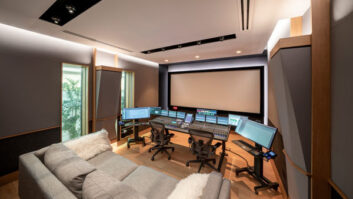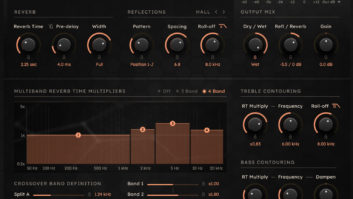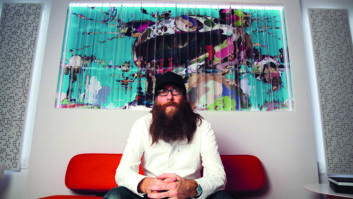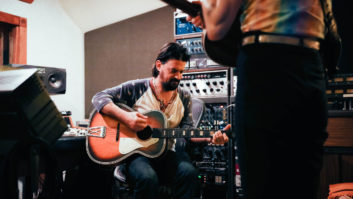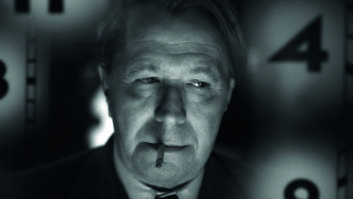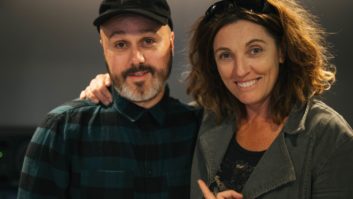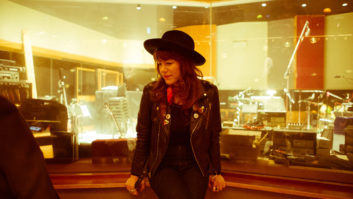
Equalization is one of the two most-common processes employed in mastering (the other being dynamics processing) to put the finishing touch on a recording project. Whether used to correct a problem, enhance something that already sounds good or simply lend consistency to the spectral balance of multiple songs, equalizers must fulfill more demanding requirements if they are to be used for mastering, and not just for tracking and mixing.
An EQ designed for mastering must provide quick, accurate recall of settings for making changes requested by the client, and for making A/B/C, etc., comparisons. For analog units, this means the EQ must have some sort of digital recall, or either switched or detented controls. Digital hardware and DAW plug-ins need the ability to store and recall custom presets.
Only products that have such functionality are included in the following collection of mastering equalizers. We’ve also limited the playing field to units that provide 1dB or smaller steps between boost/cut settings. That said, most mastering engineers would agree that 0.5dB steps are the minimum required for treating a project with kid gloves.
We’ve also limited the list of products to those that provide at least four bands, including at least one band each of parametric and high- and low-shelving filters (or the equivalent for EQ curves drawn with a mouse) per channel. All of the hardware products (which are analog, unless noted otherwise) accommodate +4dBu nominal levels. The digital hardware and plug-ins listed here offer at least 24-bit resolution. We’ve focused on EQ plug-ins that are self-contained (even if sold in a bundle); those provided by channel strips were omitted. Stock equalizers for DAWs are not included either, unless they’re also available as third-party plug-ins for other platforms.
In some cases, both mastering and tracking/mixing versions of the same model are offered, so be sure you’re ordering the right version. List prices provided are for the mastering versions. And remember, all information presented here is derived from manufacturers’ literature and should be considered a starting point in your research. We’ll begin with hardware units, followed by plug-ins.
GEAR WITH REAL KNOBS
The dual-mono, all-discrete, Class-A AD2077 from Avalon Design (www.avalondesign.com) provides four EQ bands per channel and takes a hybrid design approach. Passive shelving or bell-curve filters can alternately be chosen for low and high bands, while the two parametric mid-bands use active filters and offer x10 frequency multipliers to yield a total choice of 104 switched frequencies per channel. The passive filters provide up to 20 dB of boost or cut in steps of 0.5, 1 or 2 dB. The active filters effect up to 10 dB of boost or cut in 0.5dB and 1dB steps.
Announced at the October AES show, the Buzz Audio (www.buzzaudio.com) Resonance Equalizer Model REQ-2.2 ($TBA) derives its name from its use of switched inductors and capacitors as the reactive elements in the EQ stages. The four bands of parametric filters in this stereo unit have independent bypass switches; low and high bands can alternately give shelving response. A passive, choke-based highpass filter is also included. An unusual addition is a variable transformer-saturation circuit that adds harmonic distortion to low frequencies.
Crane Song IBIS notes many frequency settings as musical pitches (C#, F, etc.) instead of Hz.
Many of the frequency settings for Crane Song’s (www.cranesong.com) IBIS ($8,000 for the mastering version) are noted as musical pitches (e.g., C#, F, etc.) in lieu of Hz and kHz markings. Each of IBIS’ two channels offers a highpass filter and four widely overlapping bands of parametric EQ (switchable to shelving response for bands 1 and 4), with up to 6 dB of boost or cut in mostly 0.5dB steps. Independent color controls add second- and third-harmonic distortion in varying amounts to the full program or individual bands. Channel-sidechain inserts allow additional processing of the filters’ output.
The dual-mono George Massenburg Labs (GML, www.massenburg.com) Model 9500 ($10,000) is the mastering version of the venerable Model 8200 EQ. Featuring five parametric bands per channel (switchable to Shelf mode on the highest and lowest bands), the 9500 offers 24 different frequency choices per band and up to 15 dB of boost or cut in 0.5dB steps. The unit is powered by two included GML 8355 power supplies ($525 each).
Another AES 2006 debut, the Great River (www.greatriverelectronics.com) MAQ-2NV ($5,330) stereo mastering equalizer features the same Class-A, inductor-based circuitry as found in the company’s EQ-2NV, but adds extended high- and low-frequency ranges, switched gain controls, highpass filters (in addition to the four parametric bands per channel) and a channel-link function. High and low bands can be switched to provide shelving response. Boost/cut steps are 0.5 dB to ±3 dB, and then 1dB increments to ±8 dB. Transformer-balanced inputs and transformerless outputs are standard.
At first glance, the Junger (www.junger-audio.com) e07 digital filter processor ($5,838) seems to be simply a 4-band (per-channel) parametric, but each band in this switchable stereo/dual-mono unit can provide dynamic equalization for duties such as de-essing. Other features include timecode-based snapshot automation and an integral digital limiter; the latter helps prevent clipping. The e07 provides both AES3 and S/PDIF digital I/O, and standard sampling rates up to 96 kHz.

The Legendary Audio Masterpiece, designed by Rupert Neve
Masterpiece from Legendary Audio (www.legendaryaudio.com) is a 2-channel, modular rack system that can be fitted with up to nine modules designed by Rupert Neve. The Model 1515 peak equalizer module offers 16 frequency choices for each of its three overlapping bands. The Model 1517 shelf equalizer module provides high and low shelving, and a switchable “classic” circuit for transformer-effected coloration. Both modules provide up to 14dB boost/cut. A short-loaded Masterpiece with two 1517s, two 1515s and the required Master module (which provides high- and lowpass filters and an image control) and power supply lists for $10,800.
Tube-based makeup gain and line drivers complement an all-passive equalizer design in the Manley (www.manleylabs.com) Mastering Version Massive Passive EQ ($6,000). The 3U, dual-mono unit uses switched frequency and detented gain and bandwidth controls. Four parametric bands join high- and lowpass filters for each channel. A total of 44 different overlapping and interleaved frequency choices are offered per channel. Maximum boost/cut is 11 dB over 16 steps, but varies — along with step sizes — depending on the chosen bandwidth settings.
A MAST option ($750) for Millennia Media’s (www.mil-media.com) NSEQ-2 2-channel parametric EQ ($3,500) adds detents for Q and frequency controls to those already in place for gain knobs. The unit offers two alternate transformerless audio paths — discrete, Class-A FET and triode tube — for each channel. Up to 20 dB of boost/cut are available for each channel’s four filters. Low and high bands can be alternately switched to provide peaking or shelving response. The two middle bands are parametric and offer 10x frequency multipliers for extended range.
The Maselec MEA-2 ($7,505) precision stereo equalizer from Prism Sound (www.maselec.com) offers four overlapping bands of EQ and a total of 84 discrete frequencies per channel. All controls are stepped. Each band can be switched for either shelving or for one of five different bell-curve responses. Up to 8 dB of boost/cut is available in 10 steps for each band, with 0.5dB steps offered up to ±3 dB. The bandwidth of equalized bands remains constant as gain is changed. I/Os are electronically balanced.

PSP MasterQ assigns filters to preconfigured bands.
Taking digital recall of analog gear one step further, SPL (www.spl-usa.com) equipped its PQ Mastering Equalizer ($13,900) with motorized controls. The discrete, Class-A, 2-channel equalizer offers five fully parametric and overlapping bands per channel, channel link and master/slave link modes, and an optional remote that controls up to four units for surround applications. Each band can be independently switched to provide either constant-Q or proportional-Q equalization, and has up to 11.5 dB of boost/cut available. SPL’s discrete, high-voltage Supra op amps provide a blistering 150dB dynamic range.

The all-discrete, Class-A SPL PQ 2-channel EQ
Each of the SPL Passeq ($4,890) passive equalizer’s three boost and cut bands provides 12 switchable frequencies. Both shelving (fixed for high- and low-cut and low-boost bands) and bell filters (for mid- and high-boost and mid-cut bands) are provided in this dual-channel, passive unit. The Passeq’s unique design puts each coil on separate cores for improved phase performance. Supra circuitry provides the necessary makeup gain. Maximum gain boost is between +10 and +17 dB, and maximum cut is -11.5 to -22 dB, depending on the band chosen. A few controls are currently not detented, but will be updated shortly.
The Weiss Digital Audio (www.weiss.ch) EQ1 7-band equalizer comes in four different flavors: “standard” (EQ1-MK2; $3,490), linear phase (EQ1-LP; $7,350), dynamic (EQ1-DYN; $7,350) and combination linear phase and dynamic (EQ1-DYN-LP; $8,975). All four digital EQs are capable of 24/96 operation via AES/EBU I/Os, and offer seven identical, fully parametric bands covering the entire audio range. Each band can provide high or low shelving, peaking, or high- or low-cut response, or can be bypassed. Boost/cut, frequency and Q controls each have 128 steps. An M/S mode allows independent equalization of mid- and side channels.
Z-Systems‘ (www.z-sys.com) z-Q2 ($3,150) 2-channel digital EQ provides four parametric and two shelving bands (six bands total) per channel, and can operate in either dual-mono, linked-stereo or M/S modes. Center frequencies are on sixth-octave ISO frequencies. The z-Q2 has AES/EBU I/Os and offers POW-r word-length reduction and resolution up to 24/96. Gain steps are an exacting 0.1 dB. Its 80 user presets can be recalled via MIDI program-change commands. The z-Qualizer ($1,380) is essentially a much smaller-sized version of the z-Q2 that offers the same sound quality and functionality, except the former offers 99 RAM slots for storing presets.
Z-Systems also offers the z-Q6 6-channel digital equalizer ($8,700) for surround mastering. Featuring AES/EBU I/O connectors (three each), 24/96 precision and POW-r noise shaping, the z-Q6 delivers up to 12dB boost or 95dB cut for each of the four parametric and two shelving bands on each channel. Gain steps are 0.1 dB for the first 12 dB of boost/cut, increasing incrementally to between 1dB and 5dB steps for deeper cuts. The z-Q6 offers sixth-octave ISO frequencies and 50 user presets.
PLUG-INS GALORE
The SuperFreq mastering equalizer from Macintosh specialists BIAS (www.bias-inc.com) is part of the $599 Master Perfection Suite™ plug-in bundle and is included as part of the BIAS Peak Pro XT 5 stereo editor. SuperFreq can be instantiated in 4/6/8/10-band versions and has parametric, high- and low-shelving, and high- and low-cut filters with up to 24 dB of boost/cut. All bands offer 20 to 20k Hz range. Independent bypass switches for each band and A/B/C/D compare buttons facilitate mastering workflow.
The Massenburg DesignWorks (www.massenburg.com/mdw) Hi-Res Parametric EQ 2 ($795) processes audio at 88.2/96 kHz, even when the sampling frequency for the session is half that. This plug-in uses double-precision, 48-bit processing and emulates the GML 8200’s constant-shape reciprocal filter curves for its five bands. The frequency selectors on each band span 10 to 41k Hz, with up to 24dB boost/cut. Low and high bands can provide either peaking or shelving response. An innovative IsoPeak™ function temporarily hypes notch-filter response to aid in finding problem frequencies while remembering your previous settings. The plug-in is available for Pro Tools HD TDM, Mackie D8B digital console and the TC Electronic System 6000.
PSP Audioware (www.pspaudioware.com) produces three dual-channel mastering EQs. The MasterQ ($149) assigns different filters to each of its channels’ seven preconfigured bands: Parametric peaking filters serve low-mid, middle and high-mid bands, while low- and high-shelving and low- and high-cut filters serve the others. Either channel can be independently bypassed. A variety of limiting, soft-clipping and saturation algorithms are also available. MasterQ uses 64-bit, double-precision, floating-point computations and sampling rates up to 192 kHz.
The PSP Neon ($149) is a linear phase EQ that allows any of the general filter types mentioned for MasterQ to be assigned to each of its eight bands. Dual-mono, stereo and mid-side modes are all supported, along with independent processing and control of left and right channels. A high-resolution version of the Neon, dubbed the Neon HR ($249), offers increased fidelity for ultracritical applications. MasterQ, Neon and Neon HR are also included (along with PSP’s Vintage Warmer and MasterComp plugs) in the company’s MasterPack bundle ($569).

RND’s dual-channel, linear phase Frequal-izer EQ
The Frequal-izer ($249), a dual-channel, linear phase EQ plug from Roger Nichols Digital (www.rogernicholsdigital.com), foregoes the traditional band-based approach and uses 50 control points to draw EQ curves using a mouse. Up to 18 dB of boost/cut is available for each band. Equalization curves can be smoothed, scaled in amplitude, or slid higher or lower in frequency range, and the results can be viewed on a spectrum analyzer. Frequal-izer can morph between two custom presets to arrive at intermediate settings. Stereo and mono modes, A/B setups, automation support, spectrum matching, four channel-linking modes and independent equalization of left and right channels round out this plug’s feature set.
Also from Roger Nichols Digital is Uniquel-izer ($249), which offers an unlimited number of bands, each with access to parametric, low- and high-shelving EQ, and low- and high-cut, bandpass, notch and harmonic filters. Other goodies include independent parameter control for left and right channels, as well as facilities for making A/B comparisons. Frequal-izer and Uniquel-izer can be bought individually or as part of the company’s Pro Bundle ($745).
The Sony (www.sonyplugins.com) Oxford EQ plug-in ($885, TDM; $549, Native) offers five bands of parametric equalization with shelving filters alternately available to low and high bands; an LPF and HPF are also included. Four EQ types can be chosen. (GML 8200 emulation is optionally available as a fifth EQ type.) Up to 20 dB of boost or cut can be applied to peaking and shelving bands. This stereo plug-in for Digidesign Pro Tools and TC Electronic PowerCore can be instantiated in six different configurations for optimal DSP usage, and offers support for automation and sampling rates up to 192 kHz.
Like analog hardware units designed for mastering, the Universal Audio (www.uaudio.com) Precision Equalizer ($199) uses stepped-gain and frequency-selection controls, the former providing 0.5dB steps. Both dual-mono (allowing independent settings for each channel) and stereo-linked modes are featured in this 2-channel plug-in, which uses 192kHz upsampling for higher-quality processing. Four bands — two each for overlapping lows and highs — provide up to 8 dB of boost/cut for a choice of shelving and peaking filters. Also included are an HPF, independent bypasses for each band and facilities for A/B comparisons. The Precision Equalizer is also included in the company’s Precision Mastering Bundle ($500).
URS (www.ursplugins.com) offers five different parametric equalizers that can be used for mastering applications: the S Series (6-band), A-MIX (7-band), N-MIX (7-band), S-MIX (7-band) and FullTec (5-band). They are each offered individually for $249.99 (Native) and $499.99 (TDM), or together (with several additional plugs substituted for the FullTec plug) in the company’s Everything EQ bundle ($1,149.99, Native; $2,299, TDM). All but the FullTec plug-in offer switchable filter types (shelving or peaking) for low and high bands and an additional HPF and LPF, and are designed for use with Digidesign’s ICON console. The FullTec plug is a mix-bus equalizer based on the Pulteq EQP-1 and MEQ-5 analog equalizers, and offers simultaneous boost and cut controls for the same low- and high-shelving bands, along with three wide-ranging, parametric middle bands. All of URS’ EQ plug-ins offer 0.1dB gain steps.

Waves’ LinEQ, shown in broadband version
Waves (www.waves.com) offers two versions of its Linear Phase Equalizer — LinEQ Broadband and LinEQ Lowband — in one package. They are available only as part of the Waves Masters ($900, Native; $1,800, TDM), Platinum ($2,100, Native; $4,200, TDM) and Diamond ($3,800, Native; $7,000, TDM) bundles. LinEQ Broadband provides five overlapping midrange and high-frequency bands (with access to nine types of filters) and an additional low-frequency band (sporting five different filter types). LinEQ Lowband covers the 10 to 600Hz range, and provides access to five different filter types (including bell, low shelving and HPF). Up to 30dB boost/cut per band is possible, and a time-saving Trim function automatically sets 0.1dB headroom at the plug-in’s output. Linear Phase Equalizer boasts 24/96 operation and 48-bit internal processing.
There are many more equalizer plug-ins available, some of which are suitable for mastering work but didn’t meet the criteria for this roundup. Notable mentions include the Paragraphic Equalizer included in iZotope’s Ozone 3 integrated plug-in suite and select equalizers included in Focusrite’s Liquid Mix. But this article should give you a running start in your research.
Michael Cooper owns Michael Cooper Recording, in Sisters, Ore. Visit
www.myspace.com/michaelcooperrecording.
